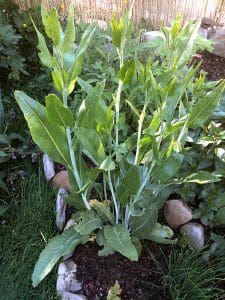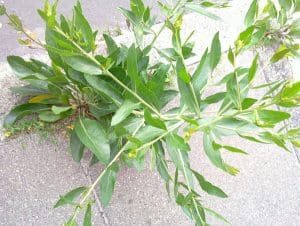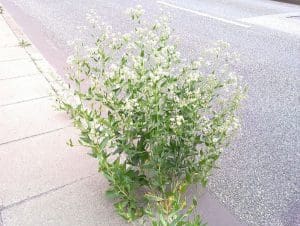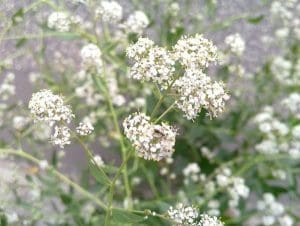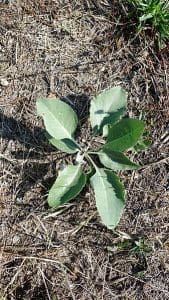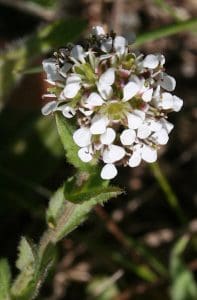Dittander / Spring / Summer / Autumn / Edible
Through this Dittander (Lepidium latifolium) Identification guide, we’re taking a look at a perennial member of the Cabbage family. It’s not the most common plant in the wild but it is becoming more common as a planted species. It’s not native to the UK and originated in Southern Europe and Asia.
Common Names
Dittander, Perennial pepperweed, Broadleaved pepperweed, Pepperwort, Peppergrass, Dittany, Tall whitetop
Botanical Name
Lepidium latifolium
Scientific Classification
Kingdom – Plantae
Order – Brassicales
Family – Brassicaceae
Physical Characteristics for Dittander
Leaves
Dittander produces grey-green, waxy, oval leaves that have serrated margins. They grow from a rosette and basal leaves can be up to 2 feet long. The plant produces a central flower spike, leaves grow alternately from this woody stem, and these leaves are much smaller. The flower spike can be up to 2 metres tall.
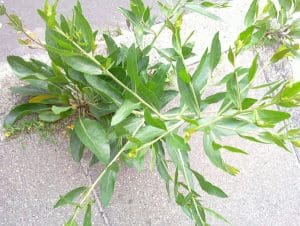
Flowers
The flowers grow in dense umbels. The flowers are white in colour with 4 petals.
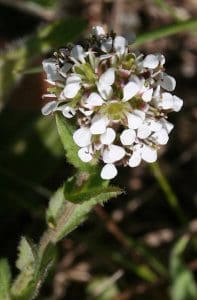
Habitat
It’s quite a common plant on salt marshes and damp ground. It’s more common in the South coast of England. It’s becoming more common inland as people grow it as a garden crop and it can become quite invasive.
Known Hazards
None known.
Could be Confused with
It’s quite a distinctive plant, it could be confused with other members of the cabbage & Mustard family but they are all safe to eat.
Edible Uses
All parts of the plant are edible, cooked or raw.
The leaves and shoots can be chopped finely and added to salads or cooked as a leafy green, they have a lovely peppery taste.
Some people find them too bitter and boil the leaves before soaking them in cold water for two days to reduce the bitterness.
The roots can be used as a horseradish replacement.
Notes on Herbal Uses
Dittander is antiscorbutic, depurative and stomachic. An infusion of the plant is used in the treatment of liver and kidney diseases.
Extra notes from the Foragers
The plant is classed as invasive in much of the USA and a lot of time and resources are spent trying to remove it. It’s thought to have arrived in the USA as seed in a sugar beet shipment.
References:
https://wiki.bugwood.org/Lepidium_latifolium
https://en.wikipedia.org/wiki/Lepidium_latifolium



